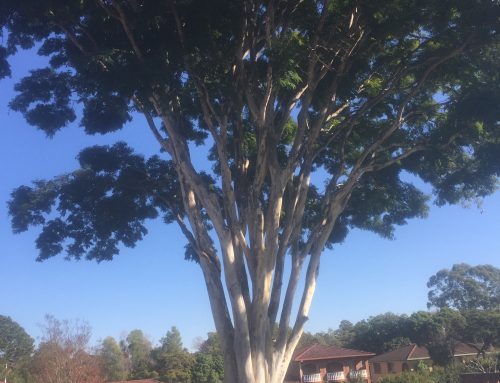Next in our series about weed and pest species is Camphor Laurel.
In 1822 Camphor laurel was introduced into Australia from Asia. Camphor laurel has been planted as a garden ornamental throughout Queensland. It is an attractive shade tree but can be very destructive as it aggressively replaces native vegetation.
The long-term consequences of its spread may result in the loss of native wildlife and agricultural productivity over
large areas of south-east Queensland. Camphor laurel invades pastures and disturbed riparian systems. It tends to germinate under fences and power lines (wherever birds rest and deposit the seed). As a result, it can push barriers over and disrupt power facilities.
It is a troublesome weed on dairy farms throughout south-east Queensland and northern New South Wales.
Along the waterways of south-east Queensland, camphor laurels are replacing the native blue gums thereby threatening koala populations. Older camphor laurel trees develop a massive root system that can block drains and crack concrete structures. The average suburban backyard is far too small to accommodate a mature camphor laurel without problems.
Removal of a mature tree can cost hundreds of dollars.
Legal requirements
Camphor laurel is a restricted invasive plant under the Biosecurity Act of 2014. It must not be given away, sold, or released into the environment without a permit. The Act requires everyone to take all reasonable and practical steps to minimise the risks associated with invasive plants and animals under their control. The Act is called a general biosecurity obligation (GBO). This fact sheet gives examples of how you can meet your GBO. At a local level, each local government must have a biosecurity plan that covers invasive plants and animals in its area. This plan may include actions to be taken on specific species. Some of these actions may be required under local laws. Contact your local government for more information.
Description
Camphor laurel is a large evergreen tree, growing up to 20 m tall. The leaves have a glossy, waxy appearance and smell of camphor when crushed. In spring it produces lush, bright-green foliage and masses of small white flowers. The spherical fruits are green (changing to black when ripe) and 10 mm in diameter.
Life cycle
Trees flowers in spring and produces over 100,000 seeds a year. The seeds can stay viable for up to three years, and germination occurs form 4–20 weeks.
Methods of spread
Spread by people as an ornamental tree. Berries spread by water and birds.
Habitat and distribution
Camphor laurel is native to Taiwan, Japan and some parts of China. It has been planted all along eastern Australia from the Atherton Tablelands to Victoria. It is particularly prevalent along watercourses and in soil types that once supported rainforest. In south-east Queensland, it has the potential to develop dense infestations similar to older outbreaks that exist in northern New South Wales. A large camphor laurel tree may produce over 100 000 seeds every year. Birds readily spread by fruit.
Control
Managing camphor laurel
The GBO requires a person to take reasonable and practical steps to minimise the risks posed by Camphor laurel. This fact sheet provides information and some options for controlling camphor laurel.
Mechanical control
Removal of newly established or isolated seedlings by hand pulling or grubbing is effective. Bulldozing is only suitable for young trees that can are small enough to remove, roots and all. Failure to remove roots of mature trees will result in regrowth. Fire kills plant tops but produces regrowth from the base.
Herbicide control
Selection of a suitable control method depends on the size of the target tree and its situation. A standing tree that was poisoned may be a severe hazard to human safety or other structures when it falls — removal of the bulk of the tree before treating the stump in such situations.
Before using any herbicide always read the label carefully. All herbicides must be applied strictly by the directions.
Foliar spray
Foliar sprays can are used for young trees up to 3 m tall.
Basal bark spray
For trees up to 6 m, carefully spray around the base of each stem or trunk to a height of 40 cm above the ground. The tree will keep growing if every part of the stump is not coated.
Cut Stump
For small trees, cut each stem off as close to the ground as possible and immediately (within 15 seconds) apply the
herbicide mixture liberally to the cut surface.






Leave A Comment